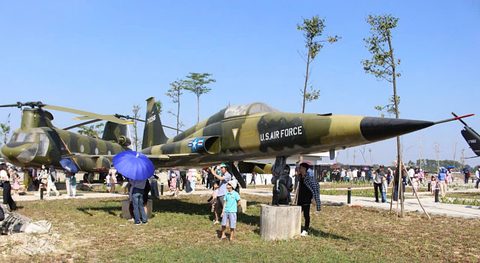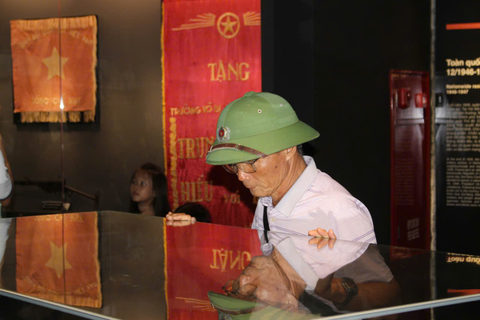The Vietnam Military History Museum, located on Thang Long Boulevard in Tay Mo Ward, Nam Tu Liem District, is open to visitors free of charge through the end of December.

The newly-built museum is located on Thang Long Boulevard in Tay Mo Ward, Hanoi. Photo: Labor Newspaper
On its opening day, November 1, the newly-built museum attracted a large number of visitors eager to explore.
As one of six national museums and the central museum in the military system, the Vietnam Military History Museum was established on July 17, 1956, and is located at 28A Dien Bien Phu Street, Ba Dinh District.
In 2019, the Ministry of Defense invested approximately VND2.5 trillion (US$99 million) to build a new museum on a 387,000 square meter site.
The museum houses over 150,000 artifacts, including four national treasures and numerous military equipment.
Featuring a modern design, the new museum creates an intuitive historical narrative with suitable color schemes and employs advanced projection technologies in its exhibitions, offering visitors a new experience.
The first floor of the museum features thousands of artifacts presented in a modern and scientific manner, utilizing advanced international museum technology. Highlights include 3D mapping dioramas, information search screens, multimedia photo documentation, automated audio guide systems, and QR codes for artifact information. Additionally, over 60 video clips detail key campaigns, battles, and historical figures.
This comprehensive display reflects Vietnam's struggles against foreign invaders and its quest for independence, as well as the formation and development of the people's armed forces, primarily the Vietnam People's Army, throughout various revolutionary periods.

A local visitor attends the museum’s opening. Photo: Labor Newspaper
The museum spans four above-ground floors and one underground level, with a construction area of nearly 23,200 square meters and a total building area of 64,640 square meters. In front of the museum stands the 45-meter Victory Tower, featuring a layered five-pointed star that symbolizes Vietnam's independence gained in 1945.
The museum stands as a significant cultural institution, featuring interactive exhibits that help visitors gain a deeper understanding of Vietnam's struggle for independence.
This place contributes to the preservation and promotion of the nation’s military cultural heritage, catering to the research, education, and cultural needs of both domestic and international audiences.
KHANH NGHI
VNQD